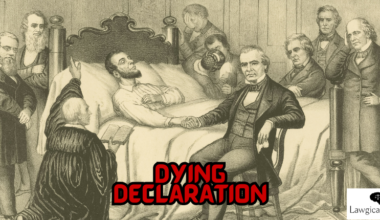The Industrial Disputes Act came into force on 1st April 1947. It is one of the key Indian laws which regulates the relationship between employers and employees. This Act aims to create a system for the prevention and settlement of industrial conflicts, while protecting the interests of labour and management and ensuring justice. The purpose is to bring this conflict to an amicable settlement. The Act also provides mechanisms such as conciliation, arbitration, and adjudication to promote justice, equal treatment, prevent strikes and lockouts, and promote peace and harmony. Section 2 (k) of the Industrial Disputes Act, 1947 defines the term “Industrial Dispute”. According to this, “Industrial Dispute” means any dispute or difference between employers and employees, or between employers and workmen, or between workmen and workmen, which is connected with the employment or non-employment or the terms of employment or with the conditions of labour, of any person.
Objectives of Industrial Disputes Act
The objectives of the Industrial Disputes Act, 1947 are as follows:
- To promote cordial relationships between employees and employers.
- To encourage collective negotiations between workers and management.
- To minimize the conflicts and resolve disputes through settlement machineries.
- To prevent illegal strikes and lockouts by employees and employers.
- To set up a proper system for investigation and find settlement for industrial disputes.
- To establish rules and regulations to provide relief to workmen for layoffs, retrenchments.
- To set guidelines for fair labour practices.
Key definitions under Industrial Disputes Act
Various important definitions under Section 2 of Industrial Disputes Act are:
- Industry, as defined in Section 2 (j), refers to any business, trade, undertaking, manufacture or calling of employers, and also includes any calling, service, employment, handicraft, or industrial occupation or avocation of workmen.
It must involve:
- Systematic activity;
- Cooperation between employer and employees, and
- Production or distribution of goods and services to meet human needs.
As held in the cases of Hospital Mazdoor Sabha as well as the Bangalore Water Supply v. A. Rajappa, profit motive is not essential for an industry, but spiritual or casual activities are excluded.
- Employer, as defined in Section (g), refers to the authority responsible for managing industry. But the definition changes depending upon who is running the industry.
- If the industry is run by the Central or State Government, the head of the department or a prescribed authority is the employer.
- If it is run by a local authority, the Chief Executive Officer (CEO) is the employer.
However, the definition is not exhaustive. In other cases, the word employer is understood in its normal sense, meaning the person or body that hires and manages workers.
- Workman/ Employee, defined in Section 2 (s), refers to a person to do manual, unskilled, skilled, technical, operational, clerical, or supervisory work, excluding those in managerial or administrative roles in any industry.
- Industrial Dispute, defined in Section 2 (k), refers to any dispute or difference between employers and employers, or between employers and workmen, or between workmen and workmen, which is connected with the employment or non-employment or the terms of employment or with the conditions of labour, of any person.
- Strike, defined in Section 2 (q), refers to the stoppage of work by a body of workmen acting in concert with a view to bring pressure upon the employer to concede to their demands during an industrial dispute.
- Lock-out, defined in Section 2 (l), refers to the closing of a place of employment, or the suspension of work, or the refusal by an employer to continue to employ any number of persons employed by him.
- Lay-off, defined in Section 2 (kkk), refers to putting aside workmen temporarily. In simple words, when workers are temporarily not given work by the employer due to reasons like machinery breakdown or shortage of materials.
- Retrenchment, defined in Section 2 (oo), refers to the termination by the employer of a service of a workman. But the termination should not be as a measure of punishment by way of disciplinary action.
- Closure, defined in Section 2 (cc), refers to the permanent shutting down of a place of employment or part thereof.
Authorities under the Industrial Disputes Act
The main objective of the Industrial Disputes Act is investigation and settlement of Industrial disputes. With that object in view, various authorities have been created by the Act. Section 3
– 9 of the Act mention such authorities to settle these disputes.
- Working Committee – In Section 3 of the Act, provision has been made about the formation of the Working Committee. The main objective of this Committee is to generate a feeling of mutual engagement between the employer and the workers. It is a body ensuring measures of good faith and common interest. This committee is constituted by the employer, as
required by ordinary or special order of the appropriate government. Following are the functions of the working committee –
- To take measures to maintain harmony and better relations between employer and workers.
- To look after and comment on matters of general interest.
- To try to eradicate any substantial differences between employers and workers in matters of mutual interest.
- Conciliation Officer – Section 4 of the Act provides for the appointment of a Conciliation officer. The appointment of the Cconciliation Officer is made by issuing a notification in the official gazette. The number of Cciliation Officers may be one or multiple and their jurisdiction may be one or multiple industries. The Conciliation Officer may be appointed for permanent or fixed time basis. The main functions of a Conciliation Officer are:
- To mediate industrial disputes.
- To settle the industrial disputes by arbitration.
- Motivating employers and workers for a just and amicable settlement.
- Once the agreement is reached, reports are sent accordingly to the appropriate government.
- Board of Conciliation– Section 5 of the Act provides for setting up of a Board of Conciliation. It was formed by the appropriate government by issuing a notification in the official gazette. The board consists of a Chairman and two or four members. The Chairman is an independent person while the member is the person representing the disputed parties. The main objective of the formation of a Conciliation Board is to openly discuss the differences of the parties to a dispute in one place, try to settle or find a settlement. When the settlement officer fails to settle a dispute, the conciliation board may be directed under Section 10 to settle such dispute by the appropriate government.
- Court of Inquiry– Section 6 of the Act provides for the constitution of a Court of Inquiry and consists of one or more members. Where a Court consists of two or more members, one of them shall be appointed as the Chairman. The court of inquiry is constituted by the appropriate government by notification in the official gazette. The main purpose of the formation of a Court of Inquiry is to inquire into industrial disputes. Its formation is required when –
- An industrial dispute arises, and
- A point needs to be examined in the dispute.
- Labor Courts – Section 7 of the Act provides for Labor Courts. Labor courts are constituted by the appropriate government after a notification is issued in the official gazette. Labor Courts may be one or multiple. There is a Presiding Officer of the Labour Court. On this post, a person can be appointed-
- who is or has been a Judge of the High Court, or
- who has been District Judge or Additional District for a minimum period of three years.
- has held a Judicial Office for a minimum period of seven years.
The main functions of the Labor Courts are-
- To adjudicate industrial disputes related to the subjects mentioned in the second schedule, and
- To perform other acts prescribed by this Act.
- Tribunal – Section 7 (a) of the Act provides for the constitution of Industrial Tribunals. In our country, the Industrial Tribunals were for the first time established through this Act. The Tribunal is constituted by the appropriate government after a notification is issued in the official gazette. The number of tribunals may be one or multiple. A person can be appointed as the presiding officer of the tribunal who-
- is or has been a Judge of the High Court, or
- who has been District Judge or Additional District for a minimum period of three years.
- National Tribunals – Section 7 (b) of the Act provides for the formation of a National Tribunal. A one-member National Tribunal is constituted by the Central Government by issuing a notification in the official gazette. The Presiding Officer of the National Tribunal may be a person who is or has been a Judge of the High Court. The Central Government may, if it considers appropriate, appoint two persons as assessors to assist and advise the National Tribunal. Such matters may be referred to the National Tribunal for adjudication, which in the opinion of the central government is of such a nature that-
- it is of national importance, or
- it an industrial institution located in one or more states is interested or affected by it.
- Arbitration Method – It is a simple method of settling industrial disputes. Workers and employers can refer their disputes voluntarily to arbitration. Section 10 (a) of this Act also states that where an industrial dispute exists or is likely to arise, workers and employers may send it for arbitration. Generally, there is an agreement between the workman and the employer for deciding the future disputes through arbitration. The arbitration decision is called the award.
Conclusion
The Industrial Disputes Act, 1947 plays a vital role in maintaining harmony between employers and employees by providing a legal framework for addressing industrial conflicts. Through its well-defined objectives, key definitions, and structured authorities, the Act ensures fair practices, promotes collective bargaining, and facilitates peaceful dispute resolution. Understanding its core components is essential for fostering a balanced and productive industrial environment.








